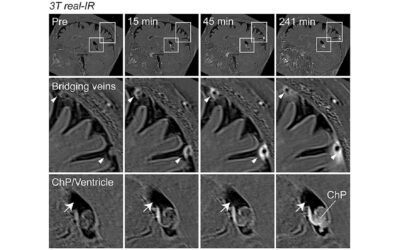One of the biggest challenges to maintaining a healthy weight is fending off the hunger pangs that can spiral into cookie jar raids. Luckily, staying trim might be as simple as stuffing your grocery cart with more of the foods that can keep you feeling full.
Such satiety-boosting foods are rich in fiber, protein and healthy fats, according to Alissa Rumsey, R.D., spokesperson for the Academy of Nutrition and Dietetics. She says, “These components are digested slower in our bodies, so we feel full for longer.”
Such foods also prevent a blood sugar spike and subsequent crash, which can cause feelings of hunger shortly after eating. On the flipside, heavily processed foods, such as sugary boxed cereals and doughy white bread, deliver little in the way of satiety power, which can lead to the hunger pangs that precede overeating. So, here are our top food picks to keep your hand out of the cookie jar.
1. Oatmeal
If you have visions of doughnuts dancing in your head come high noon, perhaps you should wake up to a bowl of oatmeal. According to 2015 research in the Annals of Nutrition & Metabolism, subjects who kick-started their day with oatmeal reported feeling less hunger and ate 31 percent fewer calories at lunch than those who ate the same number of calories in the form of a processed cereal. The satiety power of oatmeal is likely due to its high levels of soluble fiber, which essentially forms a gel in your stomach to slow down digestion and keep you feeling full for a longer period.
2. Eggs
More proof that we shouldn’t be chicken to eat eggs: A 2015 American Journal of Clinical Nutrition investigation found that people who ate two eggs for breakfast during a three-month study period reported less hunger and increased satiety post-breakfast than those who consumed an egg-free meal. Importantly, the high egg diet had no detrimental impact on blood cholesterol numbers. Eggs provide lots of protein for relatively few calories, and a high-protein breakfast can reduce levels of circulating ghrelin, an appetite-stoking hormone. Still, if you are at risk for heart disease eggs are best consumed in moderation. And to save on calories, opt for hard-boiled or poached eggs instead of fried.
3. Almonds
A 2013 European Journal of Clinical Nutrition study discovered that people who snacked on 1 1/2 ounces of almonds experienced less hunger and desire to eat throughout the day. They also did not gain weight, despite the calories almonds provide, which suggests that by increasing satiety the nuts worked to reduce people’s calorie intake during their other snacks and meals. Other nuts like pecans, hazelnuts and walnuts may bring about the same benefit.
4. Beans
It should go without saying that a diet geared towards quashing hunger and overeating should include a daily dose of legumes – among them, beans, lentils and peas. A 2014 review of studies by researchers at the University of Toronto confirms that beans and their like can bolster satiety by up to 31 percent. So try a veggie-laced bean salad to take advantage of the legumes’ fiber and protein hunger-fighting effect. In fact, research shows that plant-based protein can be just as effective at bolstering satiety and promoting weight loss as animal-based protein.
5. Rye bread
When it comes to sandwiches, take a cue from the Scandinavians and make your hand-held meal with rye bread. That’s because studies show that hearty rye bread does a better job at encouraging satiety and reducing post-meal insulin levels compared to standard supermarket loaves. Structural differences and extra fiber (a slice of pure rye bread can have up to 5 grams) make rye a more satisfying option.
6. Greek Yogurt
A 2014 study published in Nutrition Journal found that volunteers who consumed a high protein yogurt snack in the afternoon experienced greater reductions in afternoon hunger and consumed fewer calories at dinner than those who snacked on chocolate or crackers. The lofty amounts of casein protein in Greek yogurt can help slow digestion, which leads to prolonged feelings of fullness. Kefir and the up-and-coming Icelandic yogurt called skyr are other protein-rich fermented dairy options, but opt for plain versions to side-step added sugars.
7. Avocado
Including this creamy delight in your meals (think slices on salads, tacos, and soups) may keep you out of the tub of Chunky Monkey later on. Scientists at Loma Linda University, California, found that including about one-half of an avocado with a meal can reduce the desire to eat by up to 40 percent – avocado’s high amount of heart-healthy monounsaturated fat works to temper hunger pangs.
8. Salmon
Go fish for your protein fix. Research suggests that including at least 25 grams of protein with meals can have a positive impact on appetite and weight loss. A 4-ounce portion of salmon will help you nail this quota and give you a healthy dose of heart-healthy omega-3 fats, to boot. Sablefish, mussels, Pacific halibut, catfish and mackerel are other swimmers that provide high amounts of protein.
Reprinted with permission from Environmental Nutrition, a monthly publication of Belvoir Media Group, LLC. 800-829-5384. www.EnvironmentalNutrition.com.
For more information, visit www.environmentalnutrition.com









